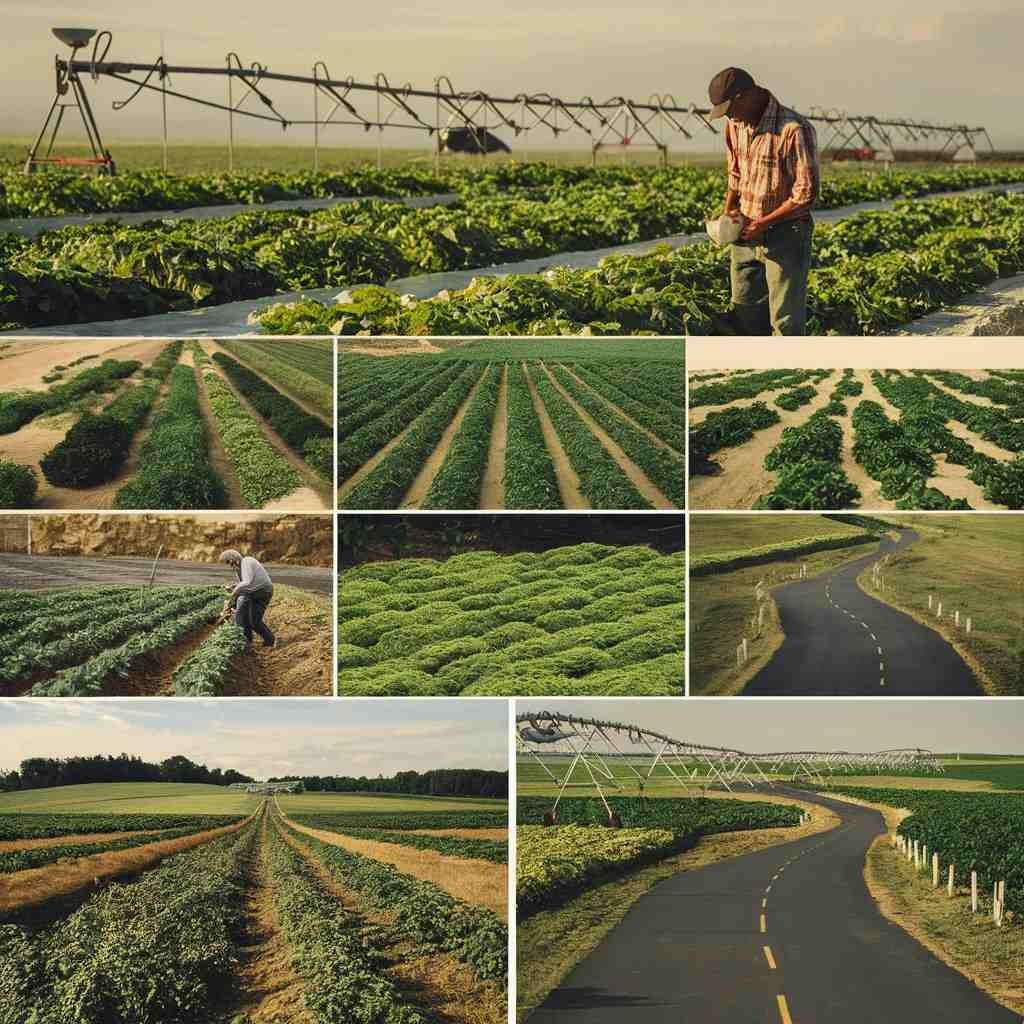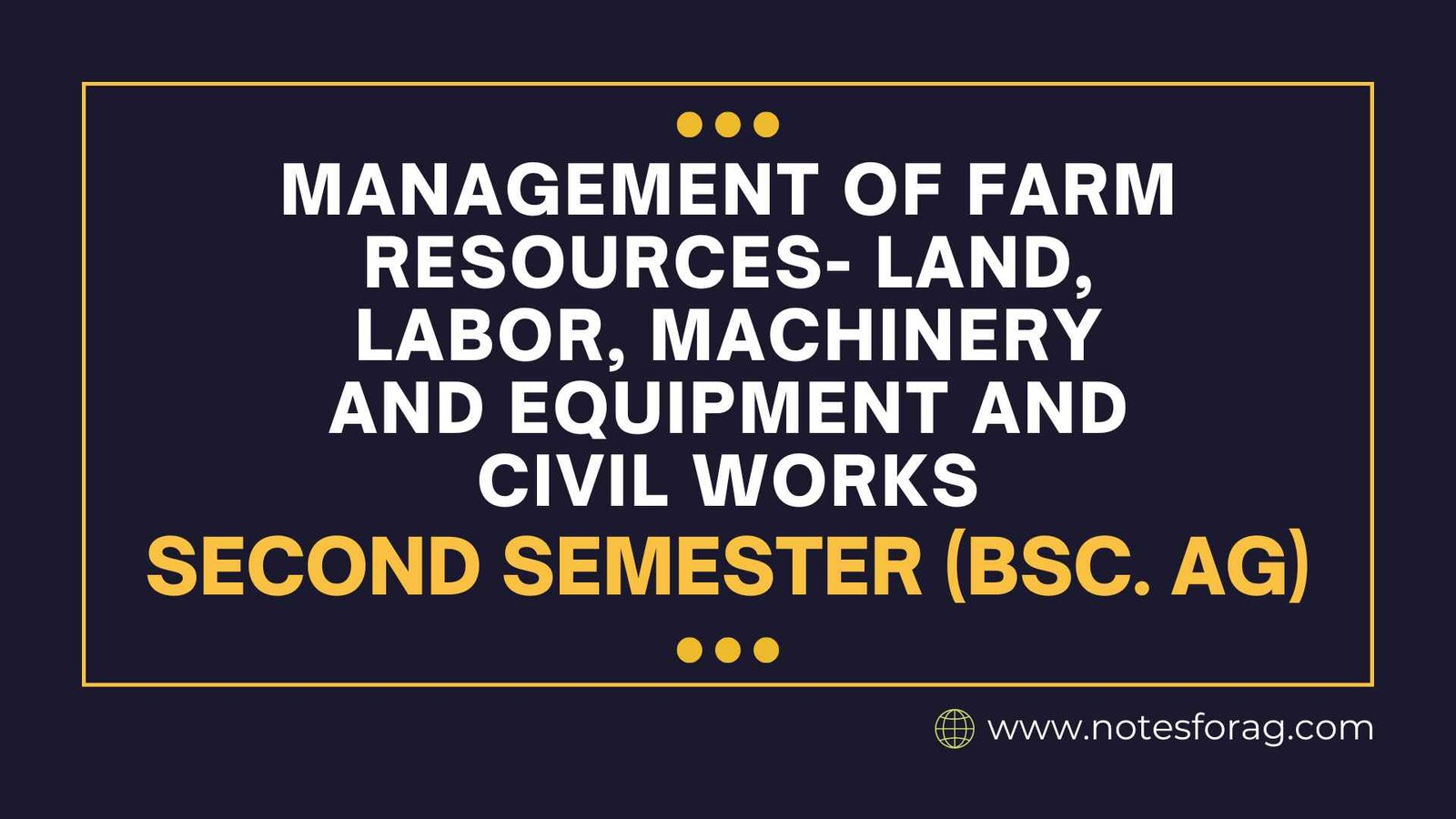Agricultural productivity and sustainability in Nepal can only be optimised through efficient management of farm resources, including land, labor, machinery and equipment, and civil works. While effective labor management emphasizes skill development and mechanization to lessen reliance on manual labor, proper land management incorporates consolidation and soil conservation techniques. Operating efficiency is increased by having access to contemporary machinery and equipment as well as by maintenance and training. Agricultural operations are supported and market accessibility is enhanced by investments in rural infrastructure, such as roads, irrigation systems, and storage facilities. When taken as a whole, these tactics guarantee increased agricultural productivity, long-term sustainability, and economic stability.
Table of Contents
Management of Farm Resources in Nepal

In order to maximize agricultural productivity and sustainability, farm resources in Nepal are managed through the strategic and effective use of land, labor, machinery, equipment, and infrastructure. This covers methods that are specifically adapted to the particular geographic, climatic, and socioeconomic circumstances of Nepal, such as sustainable land use, labor organization, machinery maintenance, and development of necessary farm structures.
1. Land Management

- Land Consolidation: Practices for land consolidation can be used to address the issue of small and dispersed land holdings. Rearranging dispersed plots into bigger, easier-to-manage units is required for this.
- Soil Health: Using organic manure, crop rotation, cover crops, and routine soil testing all contribute to the preservation of soil fertility.
- Sustainable Practices: To stop soil erosion and preserve productivity, use sustainable farming techniques including agroforestry, contour farming, and terracing.
2. Labor Management
- Efficient Utilization: Training initiatives aimed at enhancing labor force competencies to enable them to operate modern farming equipment and techniques.
- Labor Mechanization: Especially during peak seasons, introducing appropriate mechanization can help reduce reliance on manual labor.
- Labor Retention: Improving working conditions, paying fairly, and offering benefits helps keep agricultural workers in the field and discourages their migration to other countries or to cities.
3. Machinery and Equipment Management
- Access to Machinery: Encouraging people to have easier access to contemporary farming equipment and machinery through government grants, group buying, or rental services.
- Maintenance: To guarantee the longevity and effective operation of agricultural machinery, local service centers should be established for routine maintenance and repairs.
- Training: Providing farmers with instruction on how to properly operate and maintain machinery and equipment to optimize their advantages and minimize damage.
4. Civil Works Management

- Infrastructure Development: Making investments in rural infrastructure, such as irrigation systems, roads, and bridges, in order to enhance market accessibility and support agricultural operations.
- Storage Facilities: Building sufficient warehouses, cold storage units, and silos to minimize post-harvest losses and preserve produce quality.
- Water Management: To guarantee a consistent supply of water and lessen reliance on the unpredictable monsoon season, effective irrigation systems and water harvesting structures must be developed.
Implementation Strategies
- Government Support and Policies: Developing policies that encourage the adoption of contemporary farming techniques and technologies, as well as offering monetary rewards and subsidies.
- Cooperative Models: Promoting the establishment of farmer cooperatives to share equipment, pool resources, and gain access to improved markets and educational opportunities.
- Public-Private Partnerships: Encouraging collaborations amongst non-governmental, commercial, and governmental sectors to design and carry out resource management programs.
- Research and Development: Funding agricultural research to create solutions unique to a given area and provide extension services to farmers to help them implement them.
Benefits
- Enhanced Productivity: Higher agricultural productivity and profitability are the result of efficient management of land, labor, equipment, and infrastructure.
- Sustainability: Using sustainable methods guarantees the agricultural resources’ long-term viability.
- Economic Growth: By lowering poverty and boosting food security, better farm management helps rural communities’ overall economic development.
- Resilience: Farms that practice better resource management are more able to withstand changes in the market and climate.
Enhancing agricultural productivity in Nepal requires effective management of farm resources, including land, labor, machinery and equipment, and civil works. This entails reunifying dispersed land and utilizing soil preservation methods, enhancing labor proficiency and automation, guaranteeing availability of contemporary equipment with appropriate instruction and upkeep, and allocating funds for vital infrastructure such as roads, irrigation systems, and storage buildings. When combined, these tactics increase sustainability, economic stability, and productivity, resulting in a robust and successful agriculture industry.
Frequently Asked Question(FAQ)
What technology can assist in farm resource management?
Farm Management Software, Tools for Precision and GPS Agriculture, Automated and Intelligent Systems are some of the technology that can assist in farm resource management.
What are the key considerations for making large investments in farm infrastructure?
The Key Considerations includes: Needs assessment, Detailed Planning and Budgeting, Qualified Contractors and Supervision, Flexibility and Future Growth.
Related Articles

